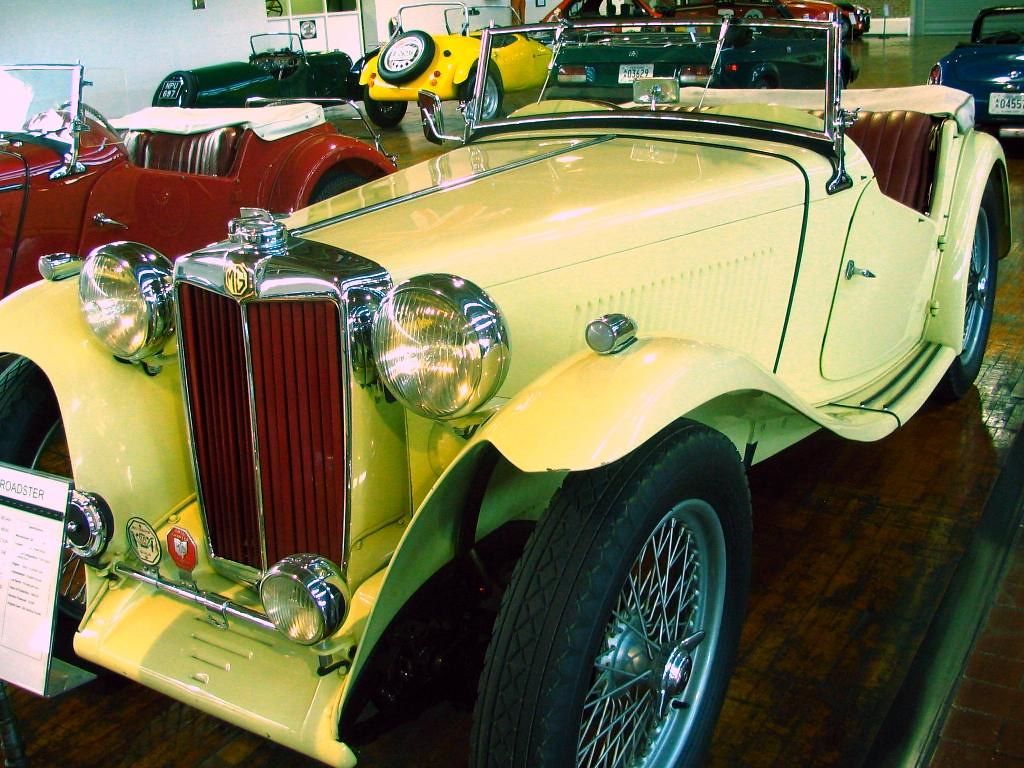
Today’s cars are packed with an incredible array of technologies, designed to make our lives on the road more convenient, safer, and ultimately, more enjoyable. Yet, amidst this technological abundance, many of the most useful functions often go unnoticed, quietly working in the background or tucked away where only the most observant drivers discover them. These hidden gems can transform your driving experience, offering surprising solutions to common frustrations and enhancing your vehicle’s capabilities in ways you might never have imagined.
From subtle dashboard indicators that save you time at the gas pump to sophisticated safety systems that act as an extra pair of eyes, these features empower you to take greater control of your daily commute and long-haul adventures. We’ve all had those moments of wondering, “What does that button do?” or “My car can do that?” Prepare to have those questions answered as we embark on a journey of automotive discovery, shining a light on the ingenious capabilities waiting right beneath your fingertips and behind your steering wheel.
Getting to grips with these overlooked tricks isn’t just about cool novelties; it’s about making your driving more efficient, secure, and stress-free. Whether you’re a seasoned motorist or new to the world of modern vehicles, understanding these features can genuinely be life-changing. Let’s dive into the first seven ‘secret’ car features that most drivers don’t know about, equipping you with useful knowledge and tools to take full advantage of your car’s potential.
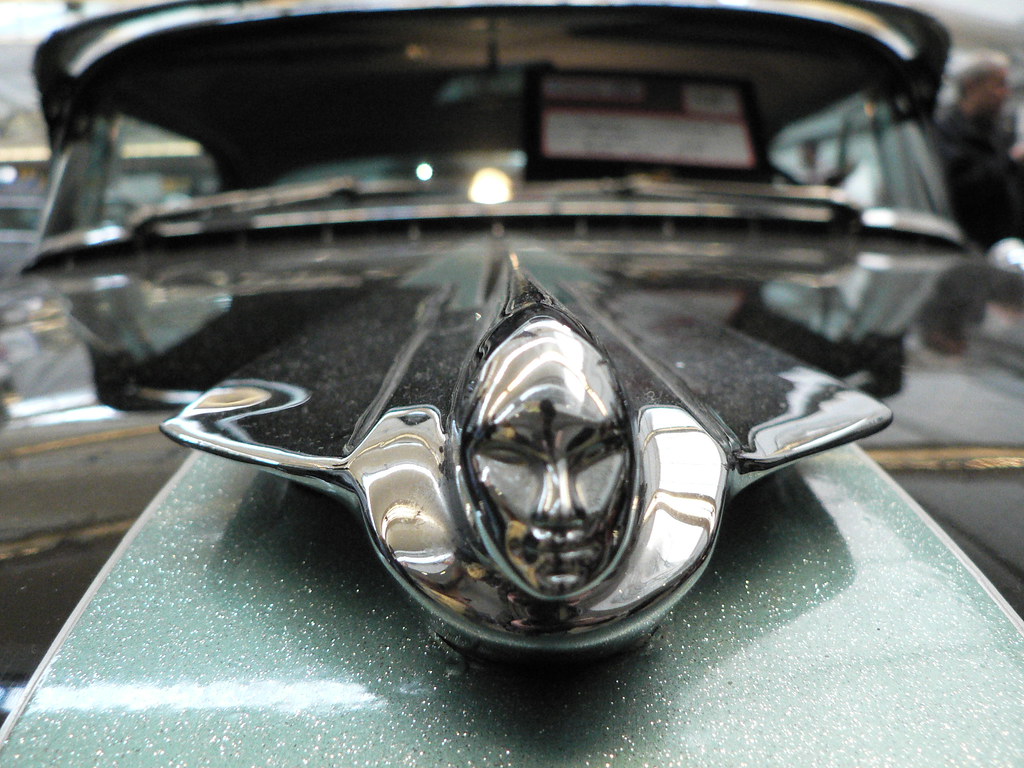
1. **The Gas Tank Locator Arrow**Few things are as universally relatable as pulling up to a gas pump in an unfamiliar car—perhaps a rental or a newly purchased vehicle—and momentarily panicking as you try to remember which side the fuel filler cap is on. It’s a small but surprisingly frequent inconvenience that can add an unnecessary layer of stress to an otherwise simple task. Fortunately, car manufacturers have quietly solved this common dilemma with a subtle yet incredibly useful dashboard indicator.
Right there on your fuel level gauge, most new cars will display a small triangular arrow. This inconspicuous arrow points directly to the side of your car where the fuel pump needs to be approached, eliminating guesswork and saving you those awkward moments of repositioning your vehicle. It’s a design detail that speaks volumes about practical engineering, focusing on user convenience in everyday scenarios.
This simple indicator is a testament to thoughtful design, ensuring that even the most basic actions remain straightforward regardless of the car you’re driving. Once you notice this arrow, you’ll wonder how you ever managed without it, especially when navigating busy gas stations or driving a car that isn’t your primary vehicle. It’s a prime example of a hidden feature designed to make your daily life just a little bit easier, turning a potential moment of confusion into one of effortless efficiency.
Read more about: 15 Car Features You Didn’t Know You Needed: Unlocking Hidden Comfort, Convenience, and Safety in Your Ride
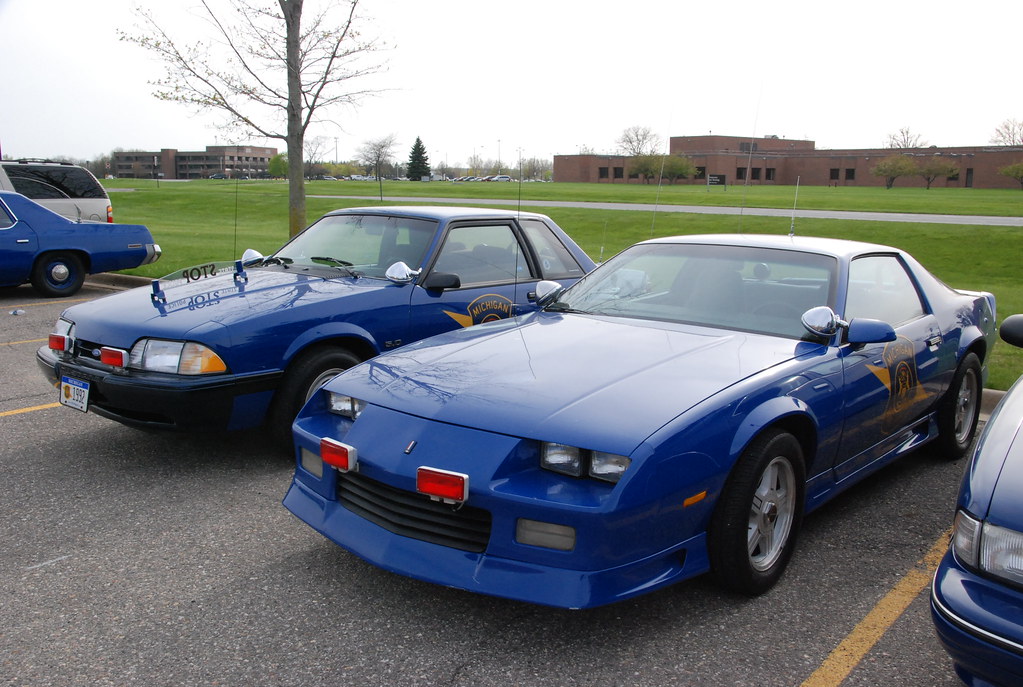
2. **The Road Condition Indicator**Driving during colder months brings with it unique challenges, especially the unpredictable nature of road conditions. While nearly every new car includes a temperature sensor to indicate the exterior ambient temperature, many drivers overlook its secondary, safety-critical function: the road temperature warning. This feature is far more than just a novelty for watching temperatures climb on a winter drive south; it’s a vital alert system.
These sophisticated temperature sensors will, in many cases, activate a road temperature warning as the temperatures drop, alerting you to potentially hazardous conditions. Often, this is indicated by a snowflake light illuminating on your dashboard, signaling that icy patches might be ahead. Some systems go a step further, providing a brief audible warning or displaying a message directly on your screen, letting you know that the roads might be icy and requiring extra caution.
Most such systems are programmed to give this crucial reminder as temperatures fall below 38°F or 40°F. This specific temperature threshold is critical because bridges and overpasses are known to freeze before the rest of the road surfaces. By understanding this often-unnoticed indicator, you gain an empowering piece of information, allowing you to adjust your driving style and avoid potential skids before they even begin. It’s a subtle guardian against the elements, keeping you safer when the mercury dips.
Read more about: Don’t Waste Your Cash: Understanding EV Battery Longevity and Replacement Realities
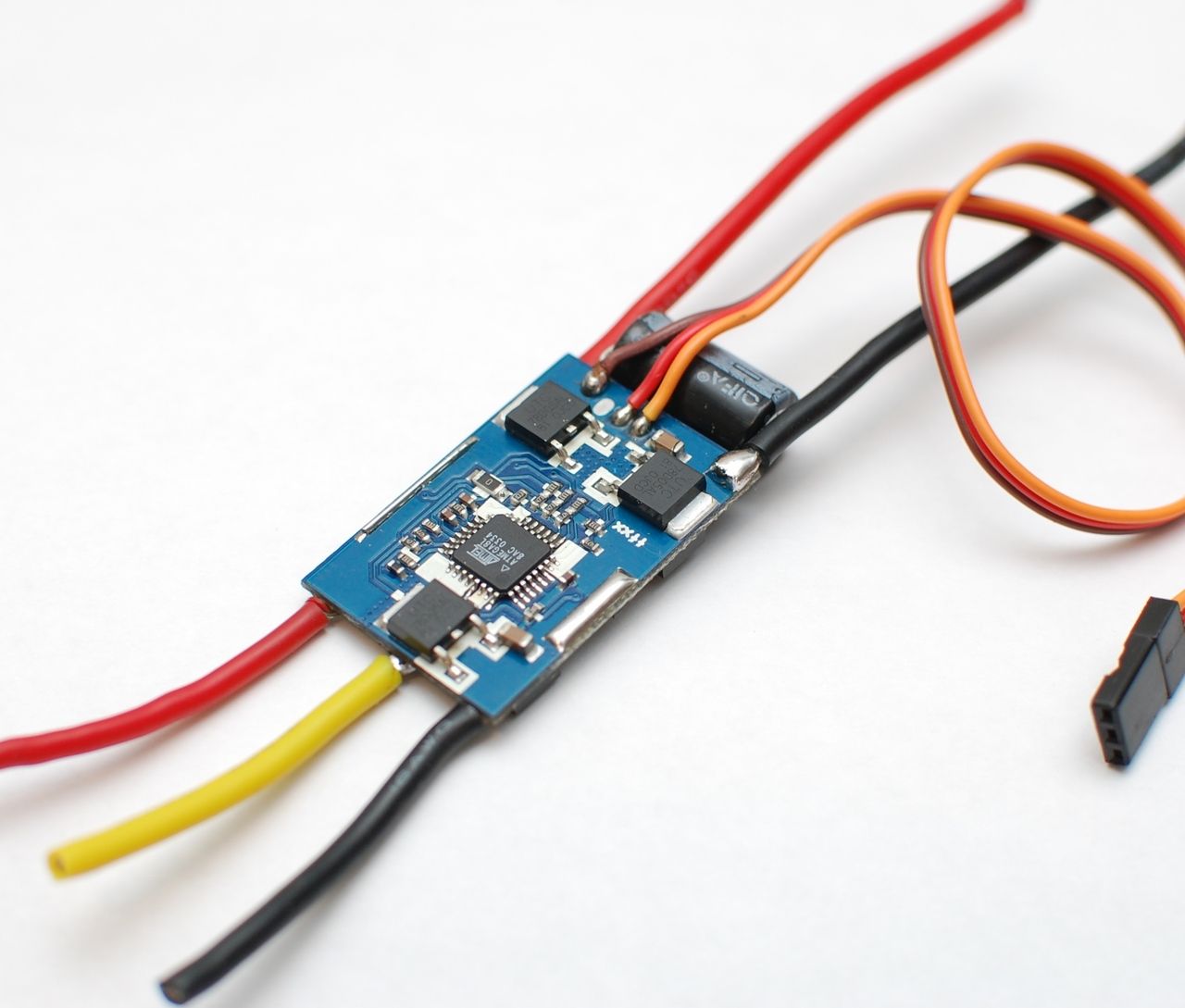
3. **Electronic Stability Control (ESC)**Losing control of your vehicle, particularly during adverse conditions or unexpected maneuvers, ranks among the most terrifying experiences one can have behind the wheel. Fortunately, modern automotive engineering has provided a powerful guardian: Electronic Stability Control (ESC). This system, now mandatory in all new cars sold in America since the 2012 model year, is constantly on duty, monitoring each of your four wheels with incredible precision.
The genius of ESC lies in its ability to detect the early signs of a vehicle sliding out of control. It recognizes when wheels on one end of the car are spinning significantly faster than the others, indicating a loss of traction. When this happens, ESC doesn’t wait for your input; it swiftly and intelligently applies the brakes to one side of the car, or even to a single wheel, to help correct the slide and restore stability. It’s a marvel of proactive safety technology.
While ESC is predominantly a life-saving safety feature, there are specific, rare instances where you might need to temporarily deactivate it. Many vehicles offer a button marked “ESC” or featuring a pictogram of a sliding car, allowing you to do so. This can be helpful if you’re trying to extricate your car from slippery mud or deep snow, or when towing a boat out of the water on a slick ramp. However, for everyday driving, it is unequivocally best to allow electronic stability control to remain active, diligently working to keep you and your family safe on every journey.
Read more about: Unleashing Performance, Ensuring Protection: 12 Sports Cars Where Speed Meets Stellar Safety Ratings
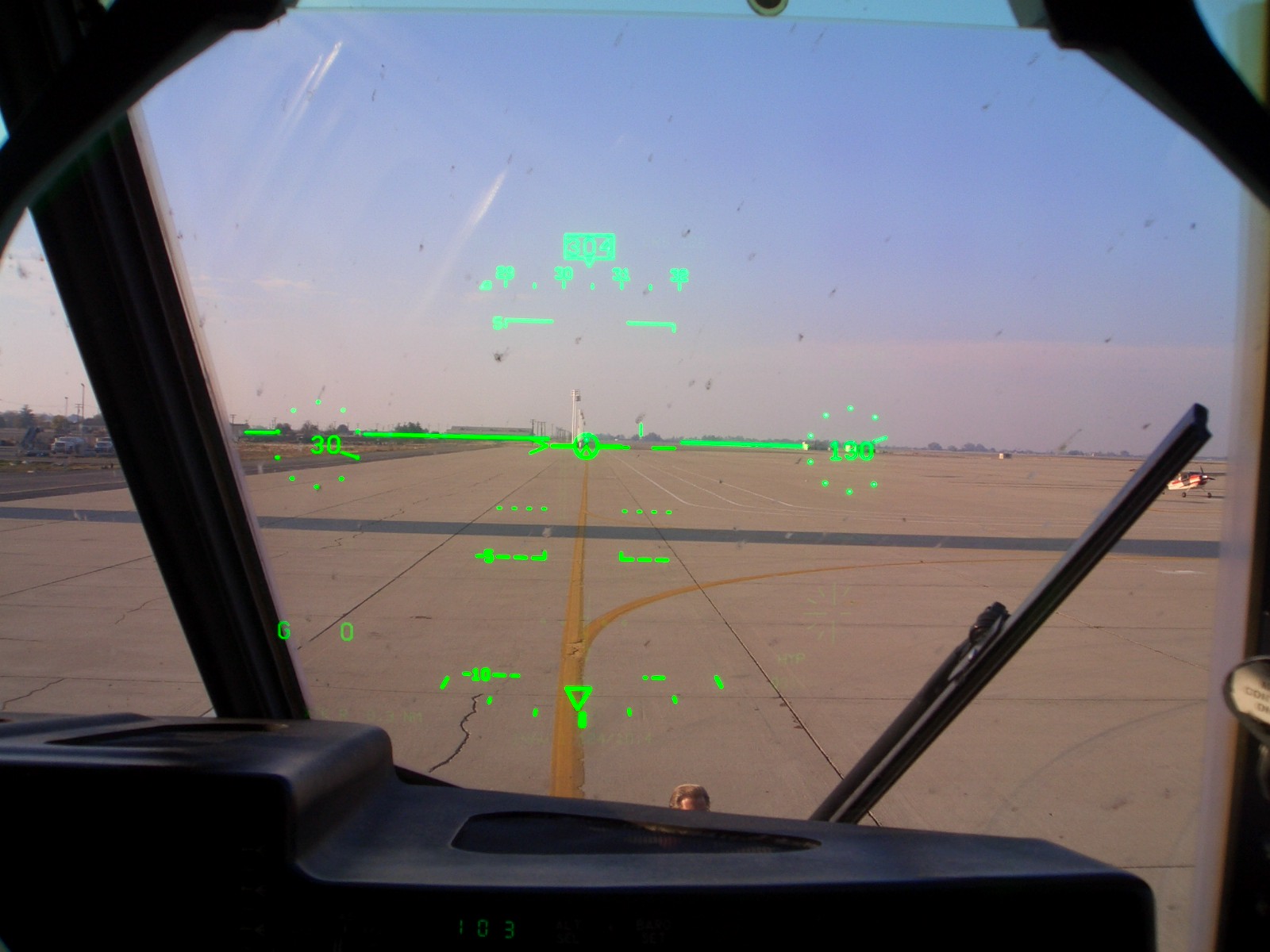
4. **Heads-Up Display (HUD)**In an age where distracted driving is a top contributor to accidents, keeping your eyes on the road is more critical than ever. The constant temptation of fiddling with phones or glancing down at navigation systems diverts precious attention, even if only for a second. This urgent need for focus has led to the integration of a remarkable feature in many newer cars: the Heads-Up Display (HUD).
Originally developed for fighter jets, this cutting-edge technology projects critical driving information directly onto your windshield, creating the illusion that the data is floating in front of you on the road itself. This ingenious design allows you to access vital information without ever taking your eyes off the traffic and road conditions ahead. It’s a seamless blend of technology and safety, prioritizing your continuous awareness of your surroundings.
Typically, a heads-up display will show essential details such as your current driving speed and turn-by-turn navigation instructions. More advanced systems might even display the speed limit of the road you’re on or the current song playing, all within your direct line of sight. By bringing this information into your peripheral vision, the HUD significantly reduces the need to look down at your dashboard, minimizing distractions and empowering you to maintain undivided attention on the road, contributing significantly to safer driving habits.
Read more about: 14 ‘Must-Have’ Car Features That Are Actually Useless: A Lifehacker’s Guide to Smart Automotive Choices
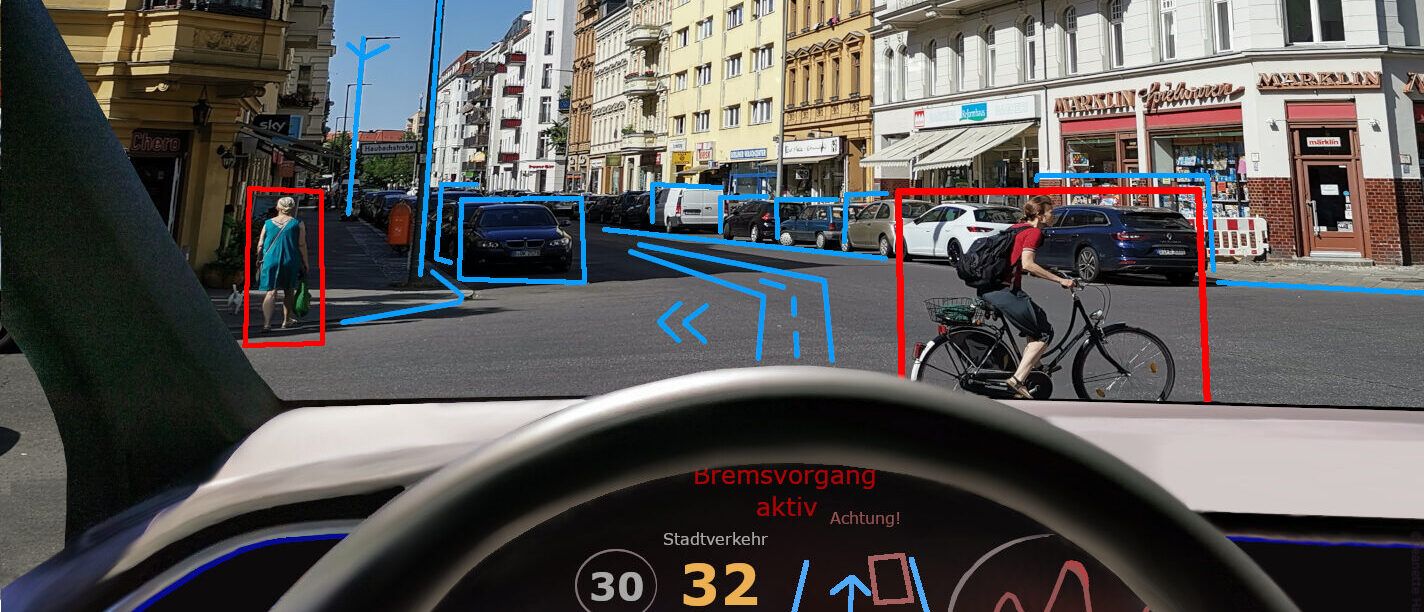
5. **Advanced Driver Assistance Systems (ADAS)**The sheer complexity of modern driving, coupled with ever-increasing traffic and dynamic road conditions, often makes us wish for a little extra help behind the wheel. This wish has been answered by a suite of innovations collectively known as Advanced Driver Assistance Systems (ADAS). These systems employ a sophisticated array of radar, laser, and camera technologies to continuously scan the road both ahead and behind your vehicle, enhancing safety and significantly reducing driver stress.
One pivotal ADAS feature is Forward Collision Warning, designed to actively look ahead for vehicles that are rapidly slowing down or stopping unexpectedly. If your car detects a potential frontal collision and senses that you haven’t yet moved your foot to the brake pedal, it will flash a clear warning on your dashboard, giving you precious extra seconds to react. This proactive alert can be the difference between avoiding an accident and an impact.
Taking this protection a step further, many vehicles integrate Automatic Emergency Braking (AEB). Should the Forward Collision Warning escalate without driver intervention, AEB systems are capable of actively applying the brakes for you, sometimes even bringing the vehicle to a complete stop, to help mitigate or entirely avoid a collision. This hidden lifesaver acts faster than most human drivers can, engaging without your input in critical moments and offering an invaluable layer of protection that many drivers only become aware of when it engages during an emergency.
Read more about: Top 7 Cars Under $40,000: Value, Performance, and Advanced Safety Features for Savvy Buyers
6. **Blind-Spot Monitoring Systems**Changing lanes on a bustling interstate or a multi-lane city street can be one of the most nerve-wracking aspects of driving. Despite meticulous mirror adjustments, that infamous “blind spot” always looms, carrying the unnerving possibility of another vehicle suddenly appearing where you least expect it. This common driving anxiety is precisely what blind-spot monitoring systems are designed to alleviate.
These sophisticated systems leverage radar and other sensors strategically placed around your vehicle to constantly detect obstacles in those hard-to-see areas directly to your left and right, immediately behind you. When such an obstacle is detected, a warning light typically illuminates in your side mirror or on the A-pillar, serving as a silent guardian. This visual cue alerts you to the presence of another vehicle, helping you avoid potential side-swipes.
Furthermore, many blind-spot monitoring systems offer an additional layer of protection. If a vehicle is detected in your blind spot and you simultaneously activate your turn signal to indicate a lane change, the system will often emit an audible warning. This clear alert signals that changing lanes is currently inadvisable, effectively preventing you from merging into an occupied space. It’s a proactive safety feature that empowers you to make safer lane changes, greatly reducing the stress and risk associated with busy roadways.
Read more about: Smart Choices for the Golden Years: 12 Top SUVs Retirees Should Consider Buying in 2025
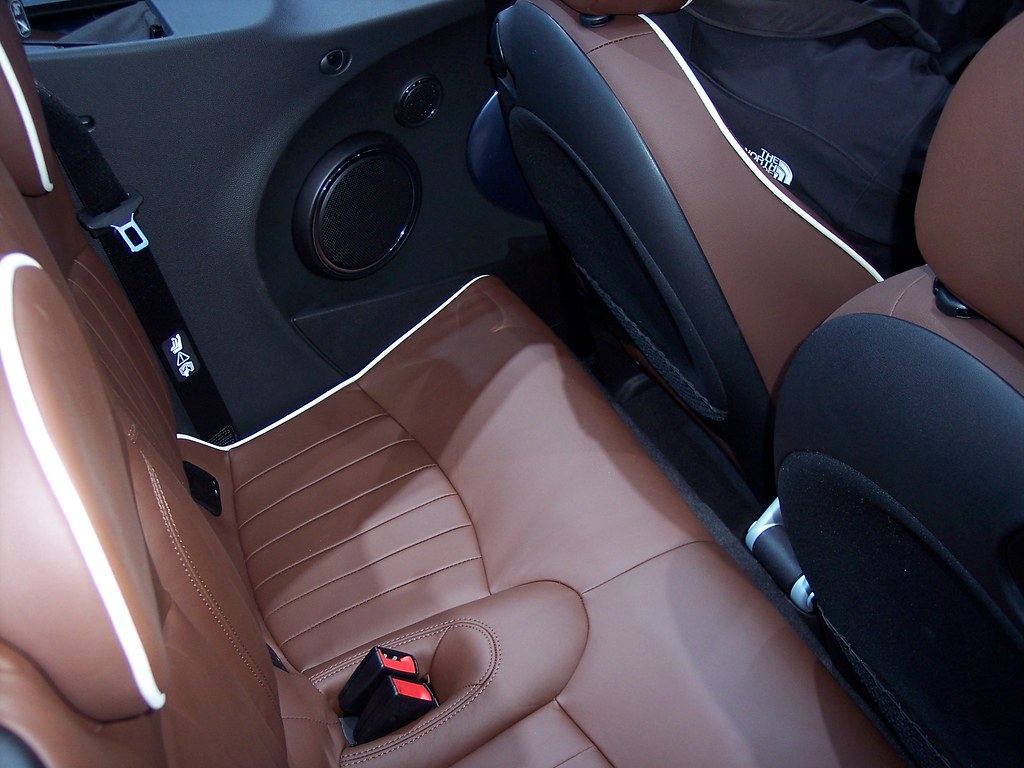
7. **Back-Seat Reminders**The tragic stories of parents accidentally leaving children or pets in the back seat of a car are heart-wrenching and highlight a devastating vulnerability. In response to this critical issue, automakers have developed discreet yet life-saving systems aimed at preventing such tragedies. These ‘back-seat reminders’ are a testament to automotive innovation focused on protecting the most vulnerable passengers.
These clever systems work by monitoring the activity of your car’s rear doors. If the car detects that a rear door had been opened either immediately before starting the car or shortly after, it registers a potential reason for a passenger or item to be in the back. This simple logic triggers the reminder system, knowing there might be something important in the rear that shouldn’t be forgotten.
Once the car stops, and the driver puts the vehicle in park and turns off the engine, these systems activate. They will typically sound a chime or flash an alert on the dashboard, prompting the driver to check the back seat. This gentle but persistent reminder acts as an invaluable safety net, encouraging a final check that can prevent horrific accidents. It’s a quiet hero, diligently working to ensure no one is accidentally left behind.
While the world of automotive engineering is constantly evolving, it’s truly remarkable how many ingenious features remain just beneath the surface, waiting to be discovered. We’ve explored some incredible advancements that make our rides safer and smarter, but the journey doesn’t end there. There are even more ‘secret’ functionalities designed to elevate your driving comfort, streamline your connectivity, and offer practical solutions you might never have imagined. Let’s dive deeper into the next seven overlooked treasures your car might be hiding, equipping you with the knowledge to truly maximize your vehicle’s potential and redefine your time on the road.
Read more about: 15 Car Features You Didn’t Know You Needed: Unlocking Hidden Comfort, Convenience, and Safety in Your Ride

8. **Storage**In our increasingly connected world, where smartphones are practically an extension of ourselves, the battle against distracted driving is more important than ever. The imperative to put your phone away and focus on the road is clear, and modern car manufacturers have responded with clever solutions that go beyond just cup holders. They understand the need for secure, accessible spots for our devices and other essentials.
Many new vehicles are thoughtfully designed with dedicated slots and cubby holes. These are often lined with a rubbery, non-slip surface, ensuring your phone stays perfectly in place while you concentrate on the journey ahead. This ingenious design keeps your device within reach yet out of the way, preventing it from sliding around or becoming a dangerous distraction. It’s a simple but effective way to promote safer driving habits by providing a designated ‘home’ for your tech.
Beyond phone storage, some cars boast truly remarkable hidden compartments. Consider the 2021 Chrysler Pacifica, for example, with its innovative Stow ‘n’ Go seating. When the second-row seats are upright and in use, the bins where they would normally fold down become fantastic covered storage areas. These discreet spots are perfect for keeping valuables out of sight or organizing everyday items, transforming unused space into practical, hidden utility. Just be sure to check these bins occasionally; as some drivers have discovered, they can become magnets for forgotten items like loose french fries or, even worse, wet swimsuits after a beach vacation, leading to some rather unpleasant surprises!
Read more about: 12 New Cars Named ‘Best Buys’ for 2025: An Expert Guide for Savvy Shoppers

9. **Conversation mirror**For families on the go, especially those with little ones in the back seat, maintaining peace of mind while driving is a top priority. Many minivans and crossover vehicles, purpose-built with family needs in mind, offer a subtle yet incredibly useful feature: the conversation mirror. This small convex mirror is strategically placed very near the interior rearview mirror, making it easily accessible for the driver.
The primary benefit of this secondary mirror is to provide the driver or front-seat passenger with a clear, wide-angle view of the rear-seat occupants. This means you can keep an eye on your children, whether they’re napping, playing, or perhaps engaging in a sibling squabble, without having to awkwardly turn your head or take your eyes completely off the road. It’s a fantastic way to monitor what’s going on with the kids, ensuring their safety and your peace of mind, all while maintaining focus on the traffic ahead.
Advancements in this area are making it even more sophisticated. Honda’s Odyssey minivan, for instance, offers an optional upgrade to the traditional conversation mirror known as the CabinWatch system. This innovative system utilizes cameras positioned in the rear seat area. With just the touch of a button, it can display exactly what’s happening in the back seat directly on the vehicle’s central screen. This enhanced level of monitoring truly redefines parental convenience and supervision on the road.
Read more about: Beyond the Quarter-Million Mark: Our Shortlist of Cars Engineered for Extreme Longevity

10. **Smartphone integration**It’s undeniable that our smartphones have become central to almost every aspect of our lives, from basic communication to entertainment and navigation. However, the convenience they offer outside the car can quickly turn into a dangerous distraction when we’re behind the wheel. Using phones for calls, texts, music, or directions while driving is not only incredibly hazardous but also illegal in most places, underscoring the critical need for safer solutions.
Recognizing this pervasive challenge, the two leading smartphone systems, Apple and Android, have ingeniously developed dedicated applications to seamlessly integrate our phones with our cars. These revolutionary platforms, known respectively as Apple CarPlay and Android Auto, allow you to connect your device to your vehicle’s infotainment system. Once connected, they transform your car’s dashboard screen into a driving-friendly interface for your phone’s most essential functions.
With Apple CarPlay and Android Auto, you can access and control specific phone features in a manner that prioritizes safety and minimizes distraction. This means you can use the navigation apps baked into your phone, displayed clearly on the larger screen of your dashboard, and effortlessly stream your favorite music services or podcasts. Of course, safety remains paramount, so there are no games or movies to tempt you. This integration empowers you to stay connected and navigate efficiently without ever needing to physically pick up your phone, making every drive more focused and enjoyable.
Read more about: After Extensive Testing: The 15 Best Robot Vacuums That Actually Work for Your Home

11. **Drowsiness detector**The statistics surrounding drowsy driving are stark and deeply concerning. Both the National Highway Traffic Safety Administration and the U.S. Centers for Disease Control estimate that a staggering number of fatal crashes, up to 6,000 every year, might be directly attributed to drivers who are too tired to be safely on the road. While automotive engineers haven’t yet delivered in-dash coffee brewers or in-car cold showers, they have made significant strides in combating this silent epidemic.
This crucial progress comes in the form of various driver drowsiness detection systems. These clever systems are designed to constantly monitor the driver’s behavior, specifically focusing on steering input. They analyze your steering motions, looking for tell-tale signs of fatigue, such as small, jerky corrections or a lack of precise input. Furthermore, many systems compare your steering patterns to how often various lane-keeping systems have to intervene to keep your vehicle centered and on the straight and narrow.
If the car’s sophisticated algorithms determine that you might be exhausted and your driving performance is being compromised by fatigue, it won’t keep quiet. These systems are engineered to proactively alert you with chimes and display clear alerts on your dashboard, strongly suggesting that it’s time to take a much-needed break from the road. Appropriately, many of these intuitive systems will even display a helpful coffee cup pictogram on the dash, serving as a gentle, universal reminder to pull over and rest.
Read more about: 15 Car Features You Didn’t Know You Needed: Unlocking Hidden Comfort, Convenience, and Safety in Your Ride
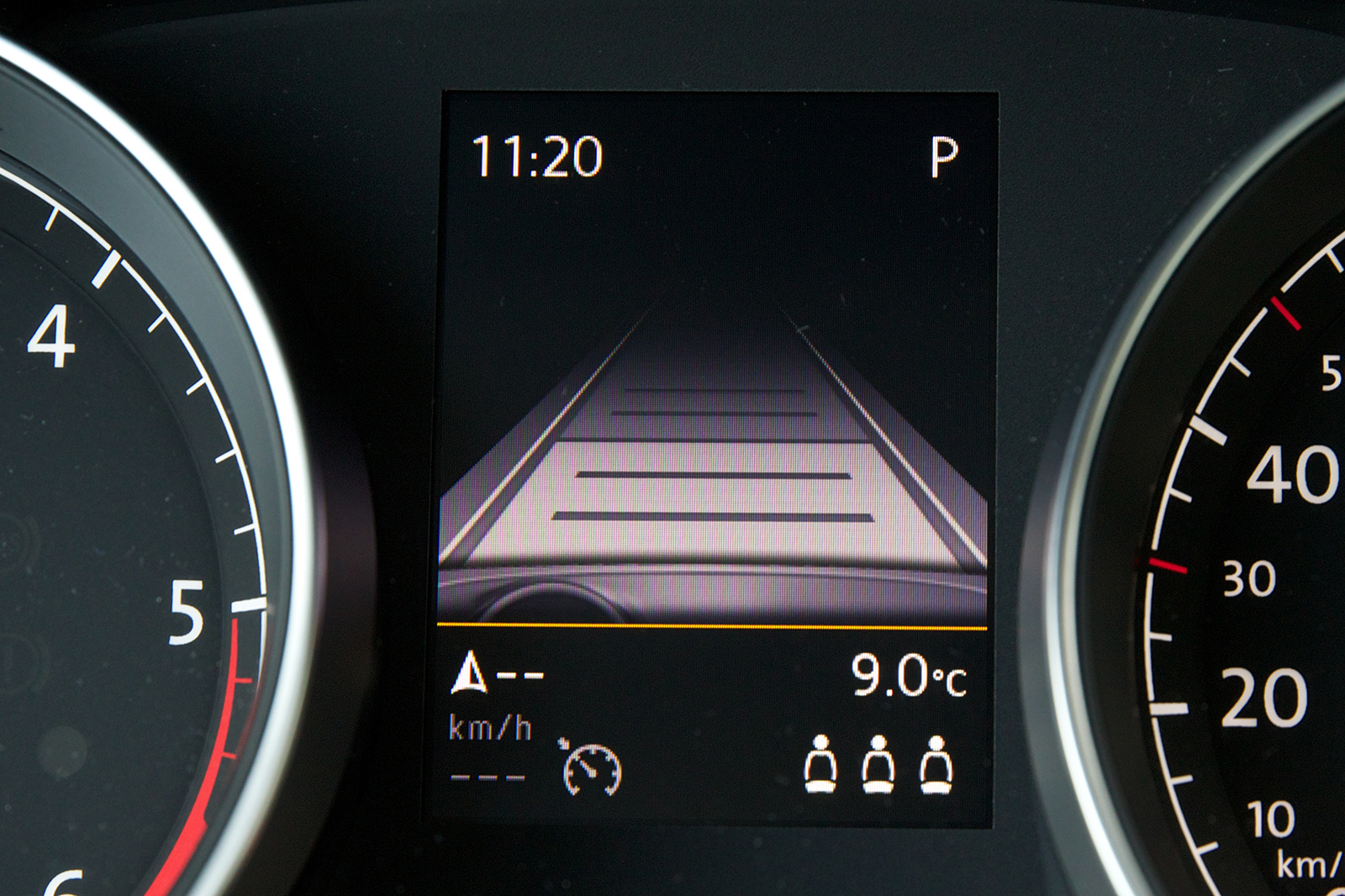
12. **Adaptive cruise control**Traditional cruise control has long been a staple for highway driving, offering the welcome convenience of setting a speed and allowing your right foot to relax. However, its limitations quickly become apparent when you encounter other vehicles. Invariably, another car might be traveling just a hair slower, forcing you to constantly cancel the cruise control, adjust your speed, or accelerate to pass. This stop-and-go interaction can negate the very relaxation cruise control is meant to provide.
Enter modern adaptive cruise control, a truly revolutionary feature that leverages the myriad sensors now integrated into many new cars. This sophisticated system constantly scans the road ahead, utilizing radar and cameras to detect the presence and speed of vehicles in front of you. Its genius lies in its ability to adapt your car’s speed automatically, ensuring it maintains a safe, pre-set distance from the car ahead without constant driver intervention.
With adaptive cruise control, you simply select your target speed using a control on the steering wheel, and your car does the rest. It will diligently maintain that speed on an open road, but critically, it will also slow down to stay a safe distance from the car in front, even applying the brakes if necessary. Many of these advanced systems are even capable of working effectively in stop-and-go traffic, gently bringing your vehicle to a complete halt if the traffic ahead warrants it. This feature transforms long commutes and highway driving into a significantly more relaxed and less fatiguing experience.
Read more about: Smart Choices for the Golden Years: 12 Top SUVs Retirees Should Consider Buying in 2025

13. **Tire pressure monitoring systems**The critical importance of properly inflated tires was tragically underscored by a series of highly-publicized crashes, directly traced back to underinflated tires. In response to these preventable incidents, federal legislation was phased in, requiring all passenger vehicles sold in America as of 2007 to be equipped with a tire pressure monitoring system, commonly known as TPMS. This mandate was a significant step forward in enhancing automotive safety.
The core function of TPMS is to vigilantly monitor the pressure within each of your tires and alert the driver if a tire has lost pressure. When a significant drop is detected, the system immediately notifies you with a warning light on your dashboard. This warning is typically a clear pictogram depicting an exclamation point contained within the outline of a tire, making it instantly recognizable even to those unfamiliar with car maintenance symbols. This straightforward alert empowers drivers to address potential tire issues before they escalate into dangerous situations.
While older TPMS systems would simply illuminate the warning light, prompting you to manually check each tire’s pressure, more modern iterations offer enhanced convenience. Many contemporary vehicles will actually display the precise pressure number for each tire directly on your dashboard screen. This allows for a quick and accurate assessment of the problem, streamlining the maintenance process. Regardless of its sophistication, TPMS remains one of the fundamental car maintenance basics that every driver should understand, acting as a silent guardian against tire-related hazards.
Read more about: Tricolor’s $200M Fraud: Unpacking the Collapse of a Subprime Auto Giant and Its Ripple Effects on US Banking
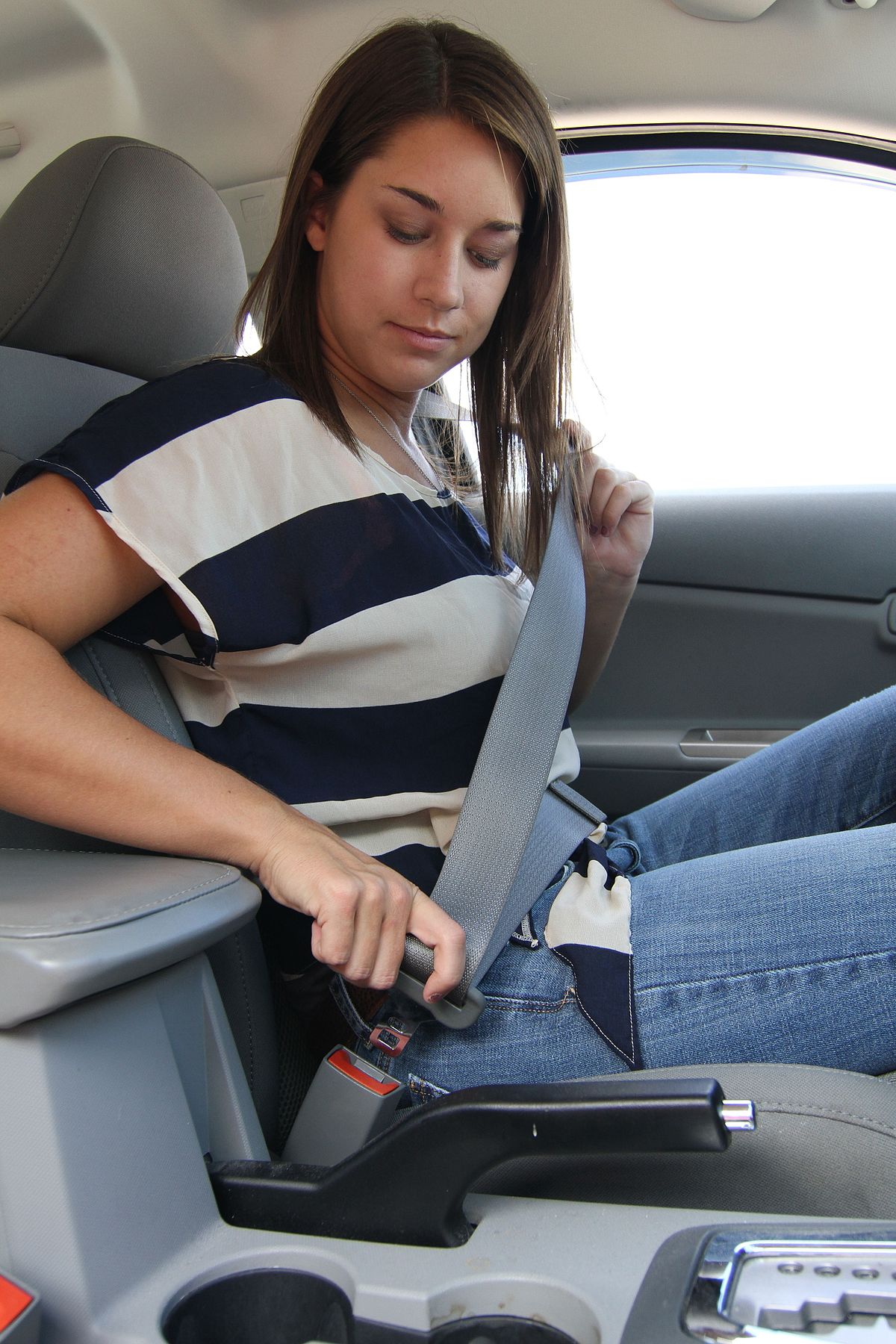
14. **Seat massagers**Embarking on a long road trip, or even just enduring a particularly grueling daily commute, can transform what should be an enjoyable experience into a physical chore. Hours spent behind the wheel can lead to stiffness, muscle tension, and overall fatigue, detracting significantly from the pleasure of driving. Thankfully, some forward-thinking automakers have integrated a luxurious and practical feature designed to combat this discomfort: built-in seat massagers.
These innovative massage features are increasingly found in premium vehicles, with brands like Lincoln offering them to enhance driver comfort. With the push of a button, the seats come alive with various massage programs, gently working to loosen muscles and relax tension in your back and legs. It’s more than just a luxury; it could even be argued that a massage while driving genuinely improves circulation, particularly on extended journeys where static postures can restrict blood flow.
The benefits extend far beyond simple physical relief. Having an active massage function available during your drive can significantly reduce the cumulative stress associated with being on the road for extended periods. Whether you’re navigating miserable traffic after a tough day at the office or logging hundreds of miles on a cross-country adventure, these seat massagers provide a welcome respite. They transform the interior of your car into a mobile sanctuary, making even the longest drives feel more manageable and enjoyable, allowing you to arrive at your destination feeling refreshed rather than drained.
Read more about: 15 Car Features You Didn’t Know You Needed: Unlocking Hidden Comfort, Convenience, and Safety in Your Ride
And there you have it—a deep dive into 14 ‘secret’ car features that are quietly revolutionizing the driving experience. From subtle indicators that simplify everyday tasks to sophisticated systems that proactively safeguard your journey, modern vehicles are brimming with capabilities designed to make your life easier and safer. Now that you’re armed with this invaluable knowledge, you’re not just a driver; you’re an empowered motorist, ready to unlock the full potential of your car and navigate the road with newfound confidence and comfort. Happy driving!


